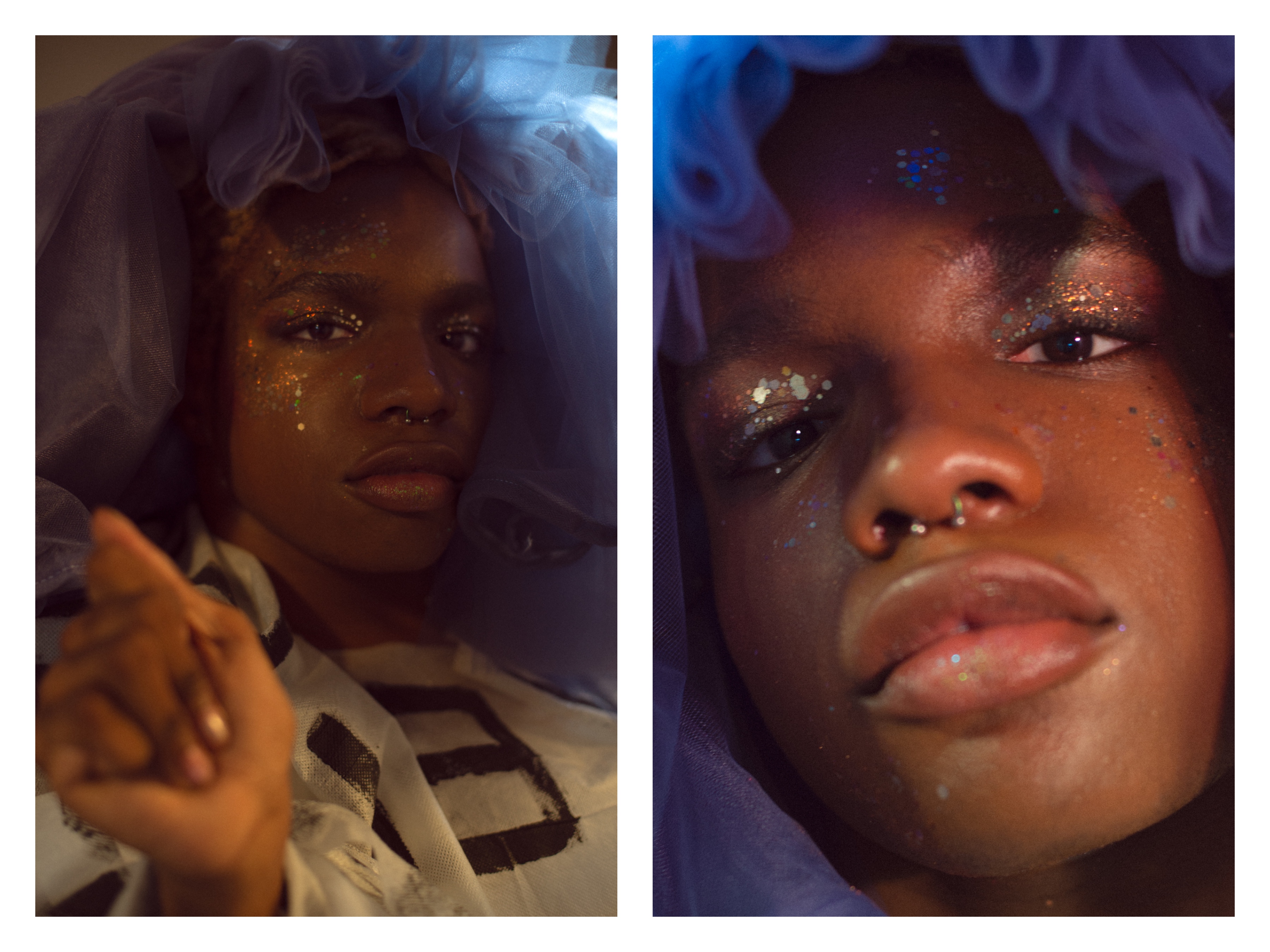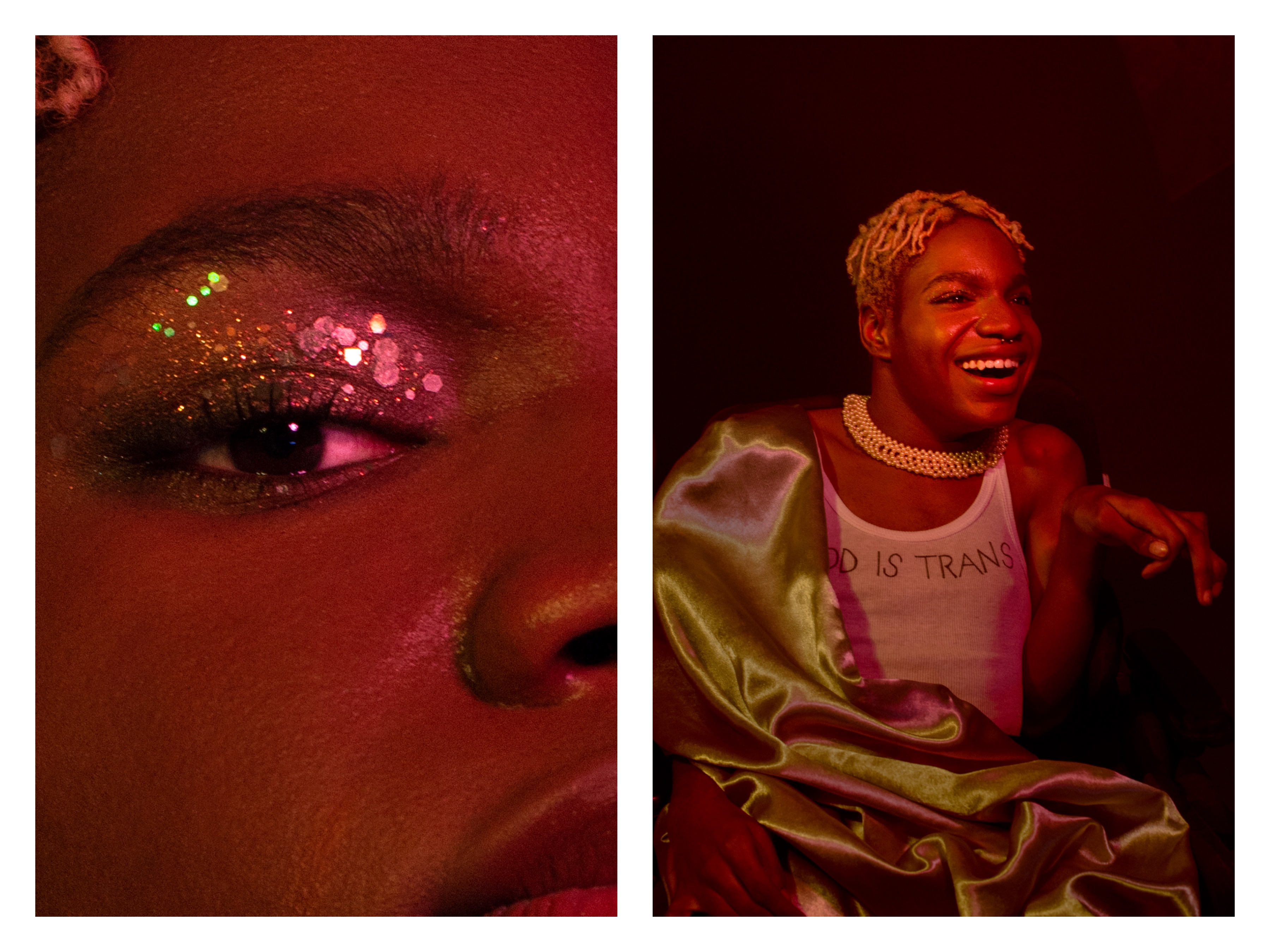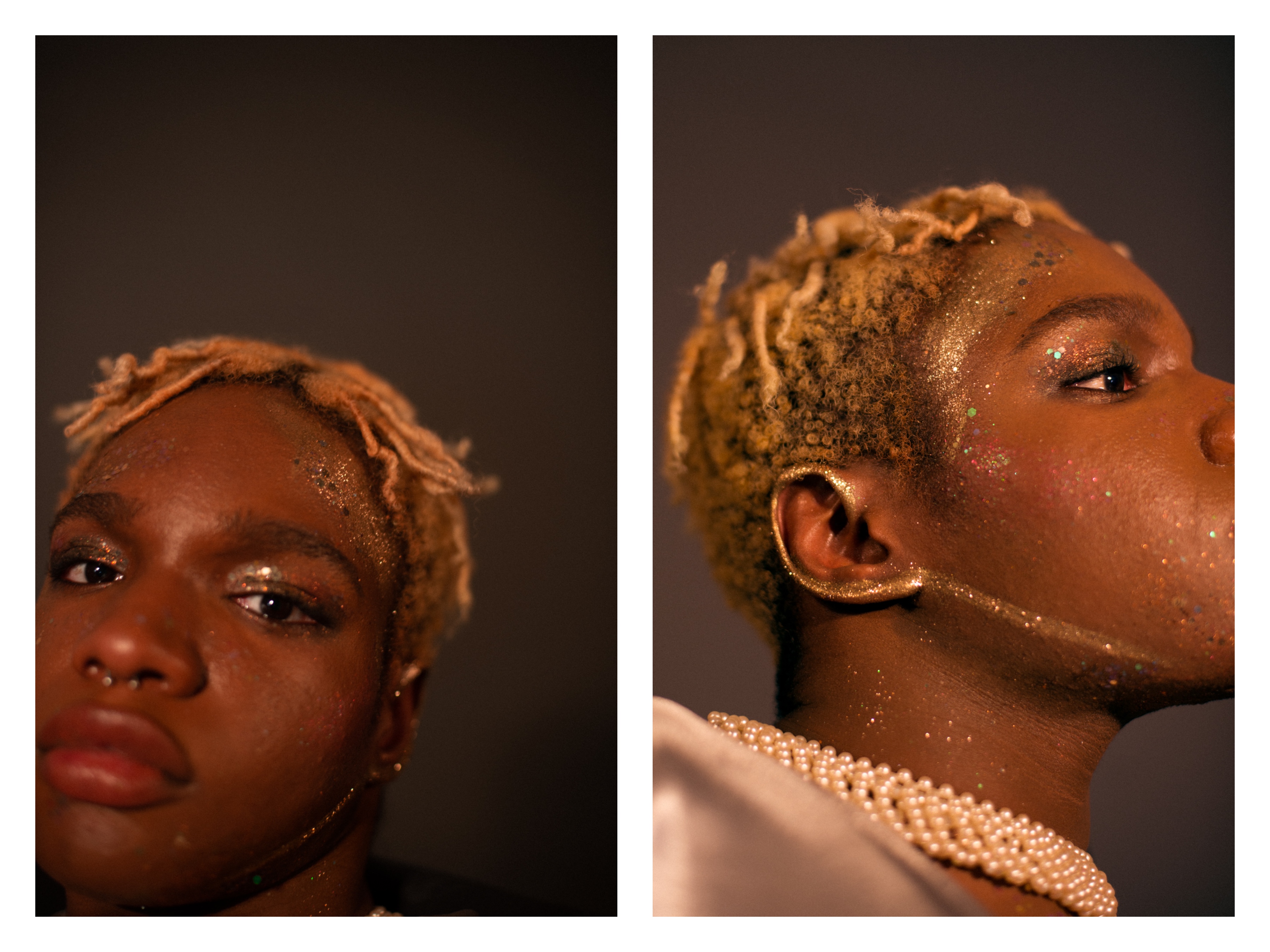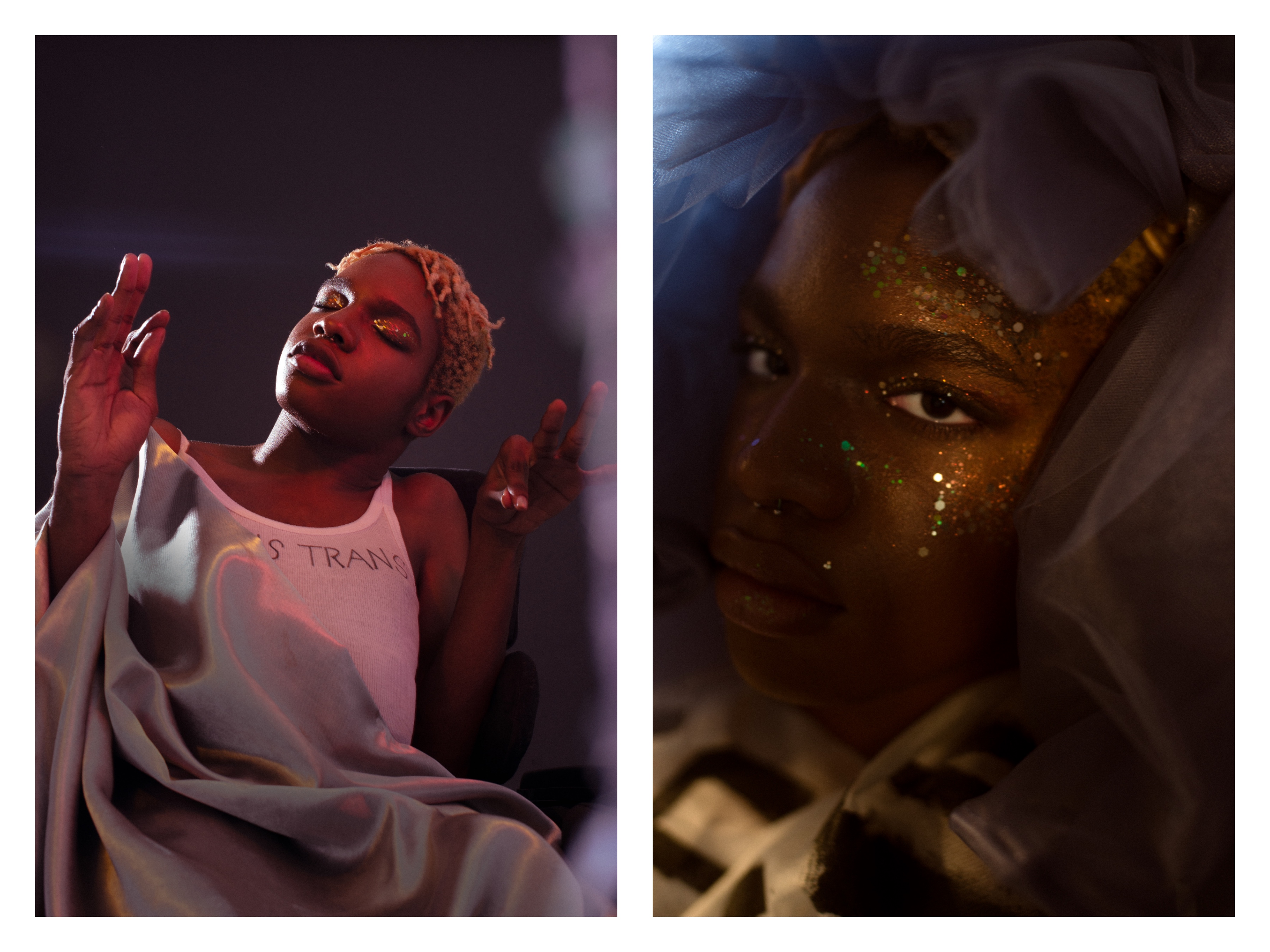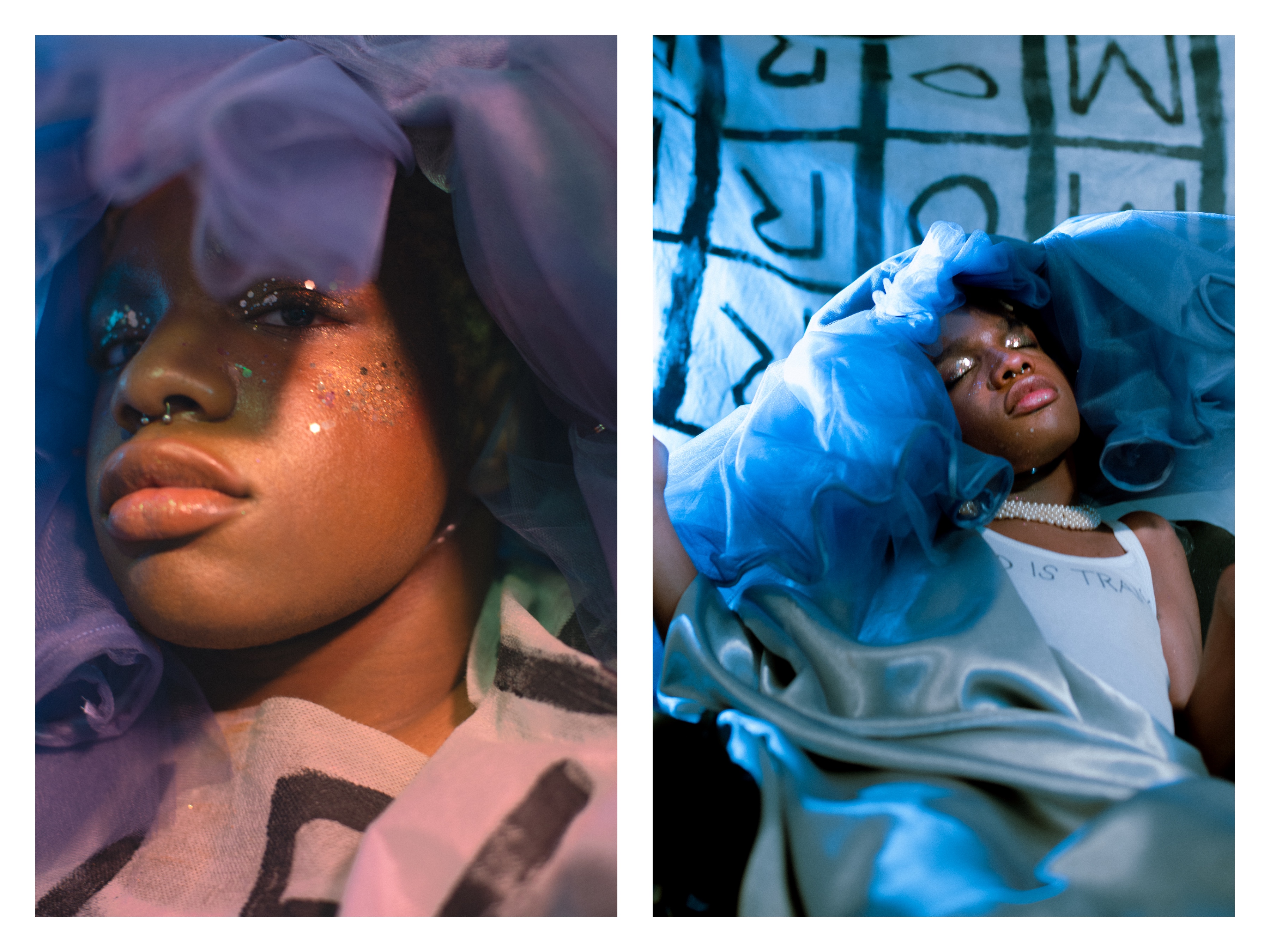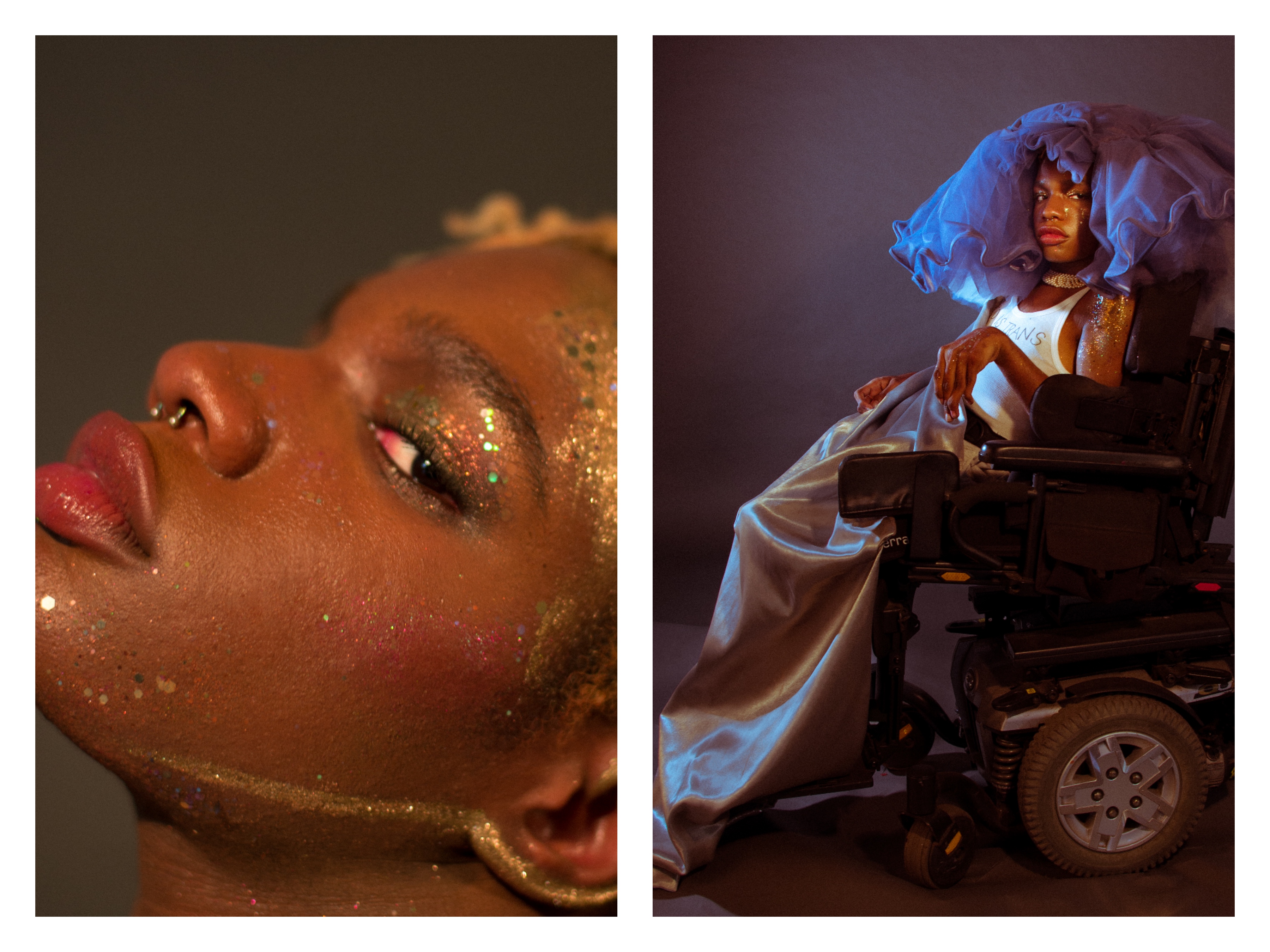ALL IMAGES © MARION AGUAS
Growing up, life was a grind for 17-year-old Aaron Philip. She was born with cerebral palsy, a condition that can affect motor function and often requires the use of a wheelchair. Though her family now has an apartment in the Bronx, seven years ago they were forced into a homeless shelter for nearly two years due to financial hardships stemming from expensive medical bills.
Despite the challenges, Philip tells VICE via email that she always had an optimistic outlook on life. At 14, she wrote a memoir, This Kid Can Fly: It’s About Ability NOT Disability, going into depth about the hurdles she faced growing up. She also came out as genderfluid and began using they/them pronouns that year.
”The reaction was not so pleasant from my parents, but my brother Aren was [...] supportive from the get-go,” she says. Now Philip identifies as a disabled gender non-conforming trans woman, using she/her pronouns, and says her family has embraced her identity: “They’re still adjusting and learning, so it’s something we take day by day, but they’re really proud.”
On Instagram, Philip is a tour de force. In one of her recent photos, she tilts her head to the side and fixes the camera with a smoldering gaze, casually holding an Ace of Hearts playing card—as well as the attention of her 33,000 followers. Alongside the glam selfies, she’s also a vocal advocate for trans and disabled visibility.
Last November, Philip literally tweeted her modeling career into existence with two photos and the caption: “honestly when i get scouted/discovered by a modeling agency it's OVER for y'all! by y'all i mean the WORLD! it's real inclusivity/diversity hours folks, get into it!” The post racked up thousands of likes and retweets, and Philip credits it as the moment her career took off.
This July, Philip became the first disabled trans woman of color to be signed with Elite Model Management. She’d been scouted through her Instagram. Now, with her first New York Fashion Week as a professional model complete, Philip is eager to slay the fashion game and show other marginalized people what change looks like.
According to a report compiled by The Fashion Spot, the runway is slowly becoming more diverse, with the number of non-white, plus-size, trans, non-binary, and over-50 models at New York Fashion Week on the rise year over year. Susannah Hooker, Image Director of Elite Model Management, explains why it’s crucial for agencies to promote diversity and inclusion. “It is no longer enough just to be a pretty face," she says. "Models also have a social responsibility, as they are increasingly becoming influencers, particularly to the younger generation.”
The industry is making strides towards greater representation, which is significant. Philip says seeing Naomi Campbell stomp the runway sparked her own love of fashion. But she thinks there’s much more work to be done. “We realize it’s not an easy road, and change does not happen overnight,” Hooker tells VICE. “Aaron has an incredible vision and an incredible voice. She is so inspiring, and I look forward to a designer being as inspired as we are and taking that leap to include her in their show.”
Philip points out that clothing matters to trans people in a way cisgender people take for granted. “The way we choose to dress, as trans people, directly affirms and presents our gender identities and expressions to the public in a way that is unique. It’s precious and beautiful to many of us,” she says.
Though she’s been draped in couture, Philip finds she feels most confident in a simple spaghetti strap tank. “I feel most like myself [...] due to how simple yet feminine it is, but not in the traditional sense, like a frock or pretty dress. It’s delicate and thin but sexy. It just does me right,” she says.
She adds that a common misconception about trans women—perpetuated by the willowy bodies seen on runways—is that their gender presentation should align to stereotypical feminine tropes. Philip says simple adjustments would help make the industry more accessible to everyone, like sewing garments in all sizes, making runways physically accessible for models with wheelchairs and mobility aids, and casting trans models who aren’t passable or don’t conform to the gender binary.
The fashion industry isn't known for being diverse and inclusive. Despite being a work of fiction, if the film adaptation of The Devil Wears Prada taught us anything, it’s that even Anne Hathaway—a white, thin, able-bodied, conventionally pretty, cisgender woman—can feel like an outsider.
And rejection is par for the course as a model. It’s easy to imagine a casting being like an episode of America’s Next Top Model, with Tyra Banks standing in front of a panel of industry experts, with only one photo in her hands but two beautiful models before her. In reality, it’s often several hours of waiting in line to be seen by designers for a minute or less before possibly leaving with zero feedback. It can be difficult to quantify what goes into the choice to cast one model over another.
But Philip describes her disability as less of an obstacle and more of a platform. She says going to castings with able-bodied models doesn’t intimidate her. “It would only feel strange if people were to say or do something strange,” she says. “I no longer feel isolated in these spaces, because I know that my presence is unique within itself, and if anyone were to be negative, that would simply be ableism.”
She adds that it’s counter-productive to waste her energy worrying about bias. “My reasons might be different for not getting jobs. They might even be unjust and discriminatory,” she says. “However, I’m not a disposable figure or body within this system. That goes for all the other folks in my position as well. [...] Just show up, do your best, and don’t compromise for anyone or anything.”
Photographer: Marion Aguas (she/her)
Stylist: Athena Zammit (she/her)
Hair Stylist (wig/veil): Estefano (he/him)
Makeup: Wo Chan (they/them)
Assistants: Alexis Lim Padriga (they/them), Nya Saint Fleurant (she/her)


